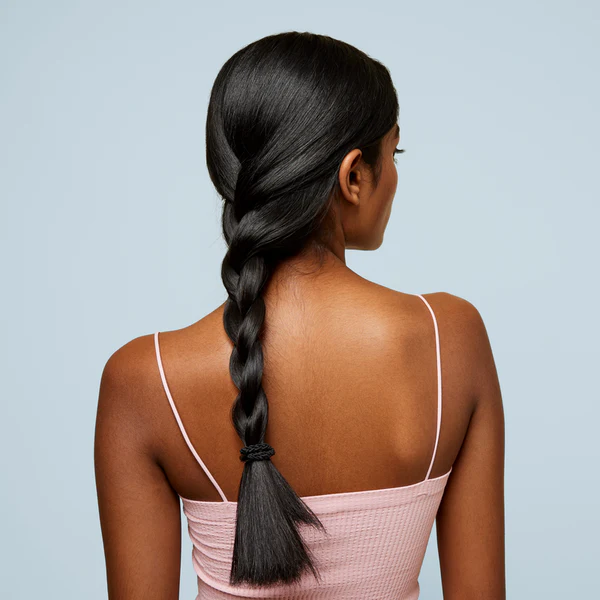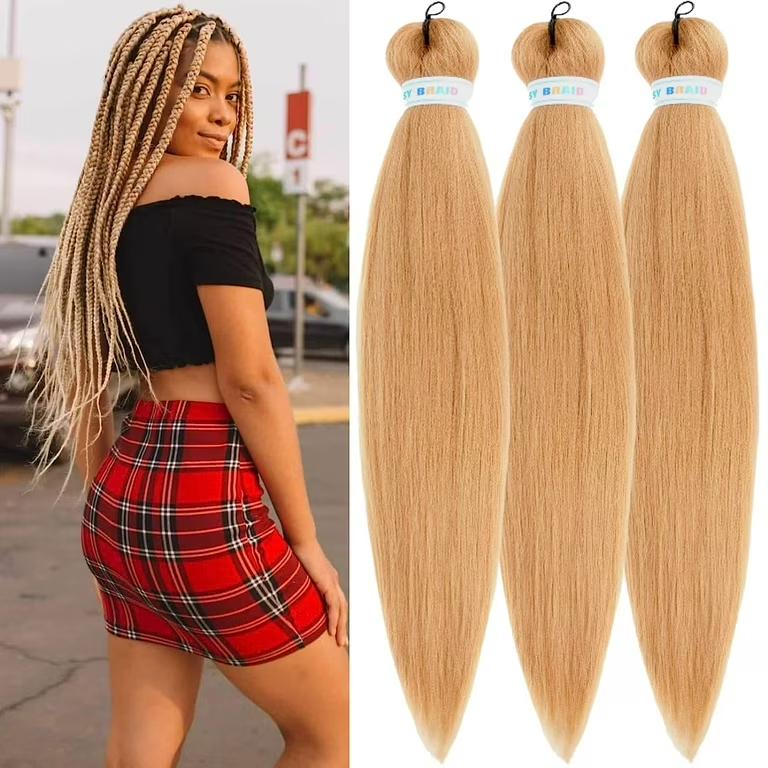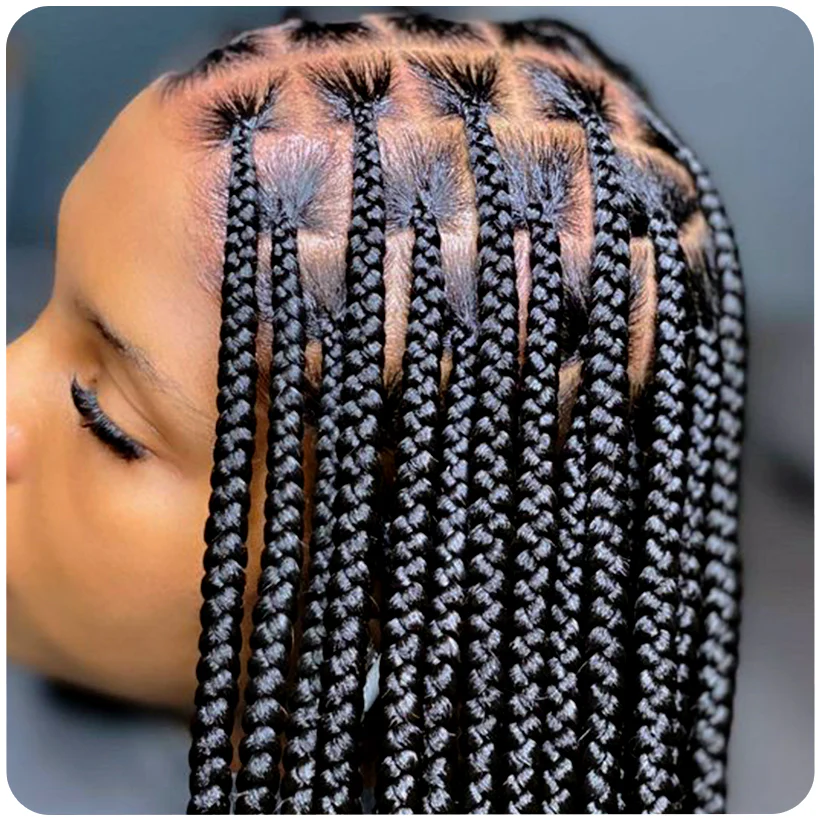
Effective Braiding Pre-Care Essentials
Essential Pre-Braiding Hair Treatments
Taking care of your hair should always be a priority, especially before braiding. How to care for braids?To ensure your hair remains healthy, you need to proceed with essential pre-braiding hair treatments.
Importance of Deep Conditioning Before Braids
Deep conditioning is a vital step. It hydrates your hair deeply and prepares it for the braiding process. Using a good deep conditioner helps in minimizing breakage and dryness. It leaves your hair soft and strong. Remember to use a deep conditioner suited for your hair type at least 48 hours before your braiding appointment.
Benefits of Protein Treatments for Strengthening Hair
Protein treatments reinforce hair strength. They repair damaged cuticles and fortify hair fibers. Doing a protein treatment before getting braids can prevent future damage. It’s best to choose a treatment that fits your hair’s level of sensitivity to protein. This ensures your hair is ready to handle the stress of braiding.
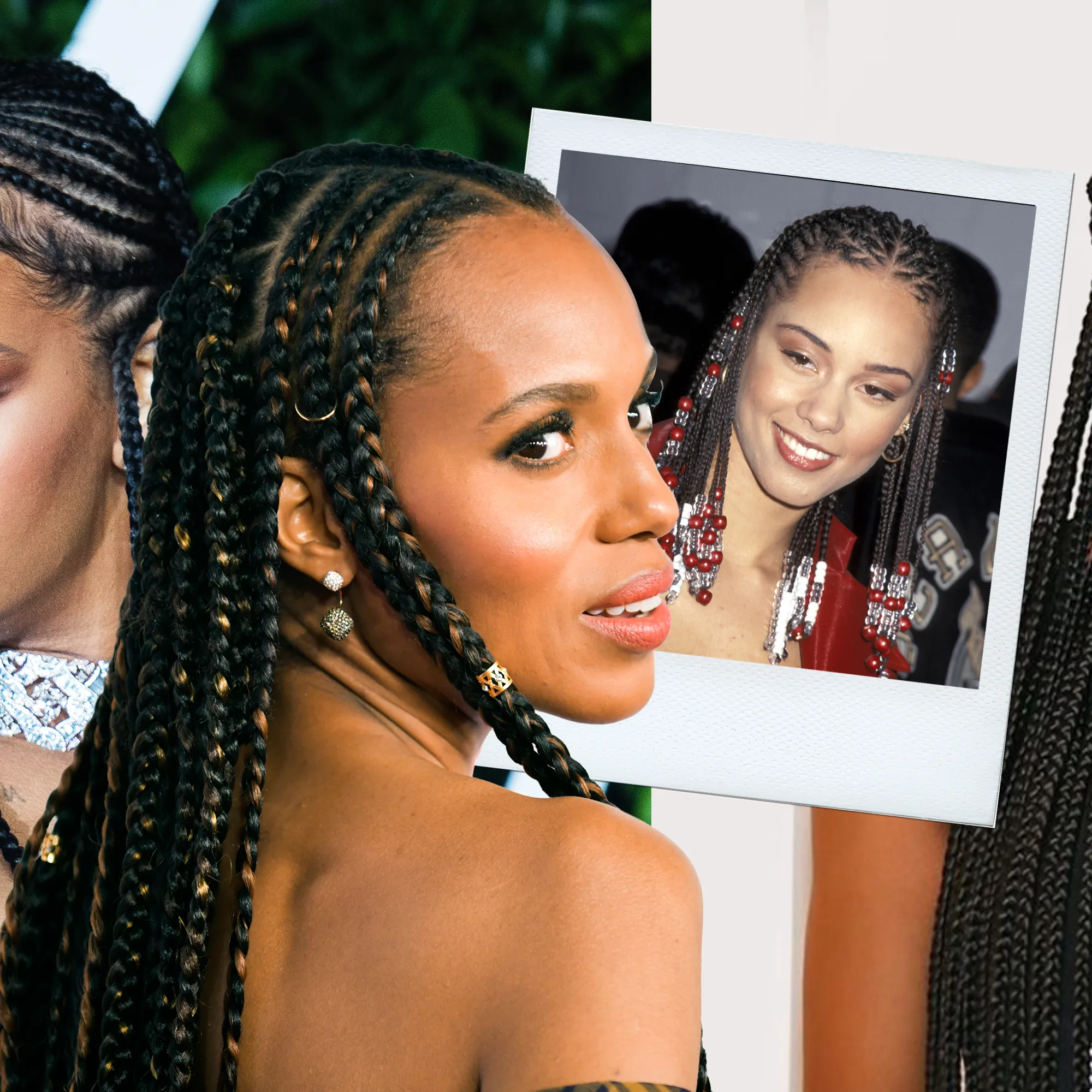
Selecting the Right Hair Extensions
Selecting suitable hair extensions is crucial for the longevity and health of your braids. Quality extensions can minimize damage to your natural hair and keep your braids looking fresh for longer.
Factors to Consider When Choosing Extensions
When it’s time to pick extensions for your braids, consider these key factors:
- Hair Texture: Match the extension texture with your natural hair for a seamless blend.
- Color: Choose a color that complements your natural hair, unless you’re aiming for contrast.
- Weight: Avoid heavy extensions that can pull on your roots and cause tension.
- Material: Opt for high-quality materials; synthetic can be less costly but human hair tends to look more natural and last longer.
Understanding the Impact of Extension Quality on Hair Health
The quality of your extensions plays a significant role in maintaining hair health:
- High-Quality Extensions: They don’t tangle easily, reducing the risk of damaging your hair when styling or removing the braids.
- Cheap Extensions: These may cause irritation or allergic reactions, and might also lead to quicker matting and tangling.
Investing in good quality extensions is not just about aesthetics; it’s about protecting your hair from potential harm. Choose wisely to ensure your hair stays as healthy as possible during and after your braiding experience.
Proper Hair Preparation Techniques
Preparing your hair properly is a critical step before getting braids installed. Proper preparation helps to minimize potential damage and breakage, ensuring that your braids look great and your hair remains healthy throughout the period you keep them in.
The Role of Trimming and Sealing Ends
Trimming and sealing your ends are part of good hair prep. Trimming gets rid of split ends, which can travel up the hair shaft and cause more damage. However, don’t overdo it; only trim if you notice severe split ends. After trimming, ‘sealing’ refers to locking in moisture at the hair tips to protect them. Use natural oils or a sealant to coat the ends after moisturizing your hair. This step is crucial as it prevents your ends from drying out and breaking.
Cleaning and Moisturizing Strategies for Optimal Hair Health
A clean and moisturized scalp is the foundation of healthy box braids. Start with a thorough wash using a non-sulfate shampoo, especially if you have a build-up of products. Follow up with a deep conditioning treatment to infuse your hair with moisture. After washing, apply a generous amount of a leave-in conditioner for added hydration. A moisturized scalp prevents dandruff and itching, while hydrated hair reduces the risk of breakage. It is also essential to keep your hair moisturized throughout the duration of wearing your braids to maintain its health.
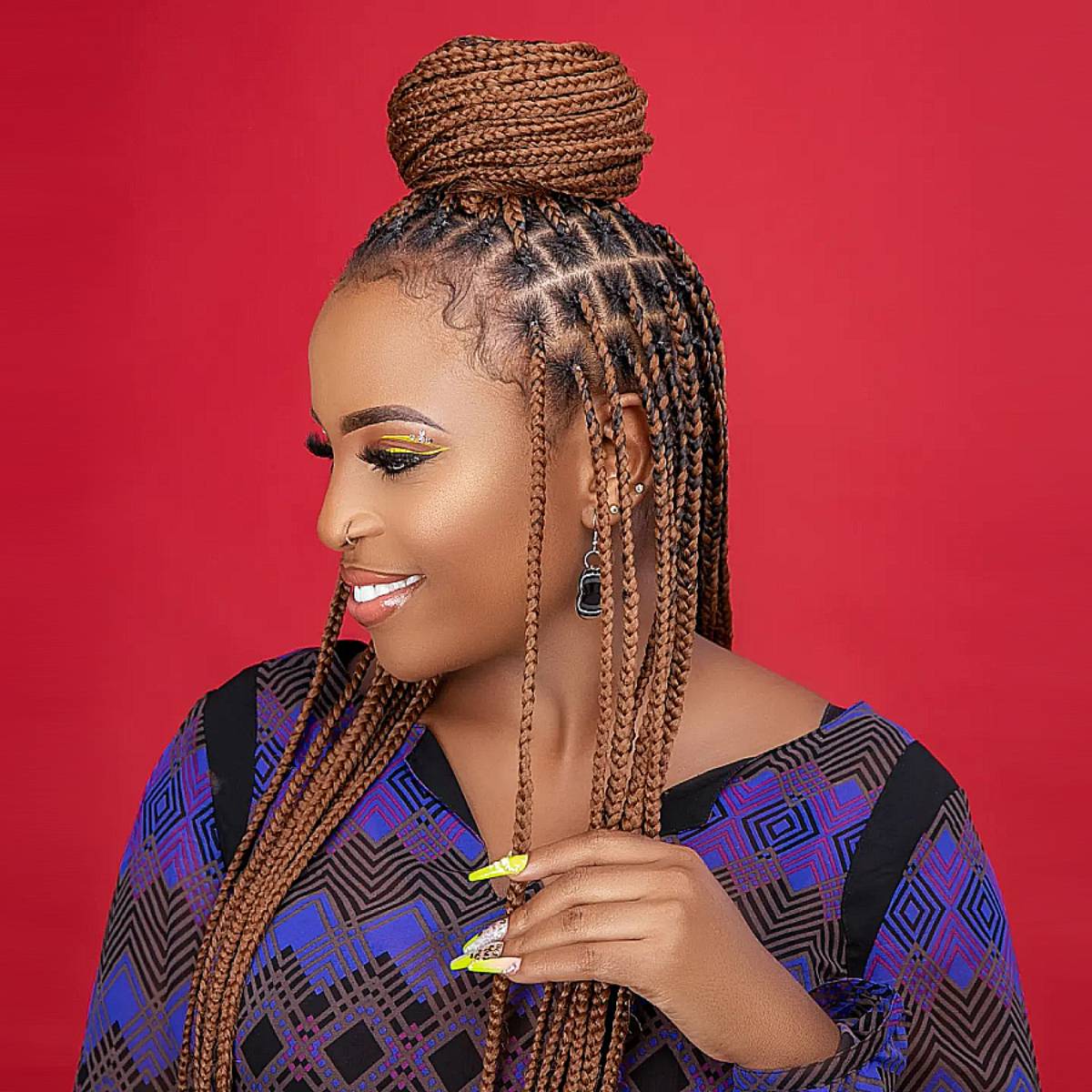
Scalp Care While Wearing Braids
Caring for your scalp is crucial when you have braids. This practice ensures that your natural hair remains healthy under the protective style. Here, we’ll explore the benefits of regular scalp treatments and recommend both homemade and commercial products that aid in maintaining scalp health.
Benefits of Regular Scalp Nourishment
Regularly nourishing your scalp can prevent common issues such as dryness and itching, which are prevalent when wearing braids. By keeping the scalp clean and moisturized, you promote a healthy environment for hair growth. Proper scalp care can also prevent build-up of product residue and dandruff that often exacerbates scalp irritation.
Homemade and Commercial Products for Scalp Health
To maintain optimal scalp health, consider these homemade and commercial solutions:
- Homemade Apple Cider Vinegar Rinse: Mix equal parts water and apple cider vinegar to create a rinse that clarifies and soothes the scalp. It’s natural and effective.
- Tea Tree Oil: Known for its antimicrobial properties, adding a few drops of tea tree oil to your shampoo or conditioner can help keep your scalp free of bacteria.
- Commercial Scalp Treatments: Products like Neutrogena T/Gel Therapeutic Shampoo or Head and Shoulders Itchy Scalp Care with Eucalyptus can relieve itchiness and manage flakes.
- Moisturizing Oils: Natural oils such as coconut, olive, or jojoba oil can be massaged directly onto the scalp to hydrate and nourish. These oils also help in sealing moisture, keeping the scalp healthy.
By incorporating these practices and products, you ensure that your braids look great and your scalp remains in top condition.
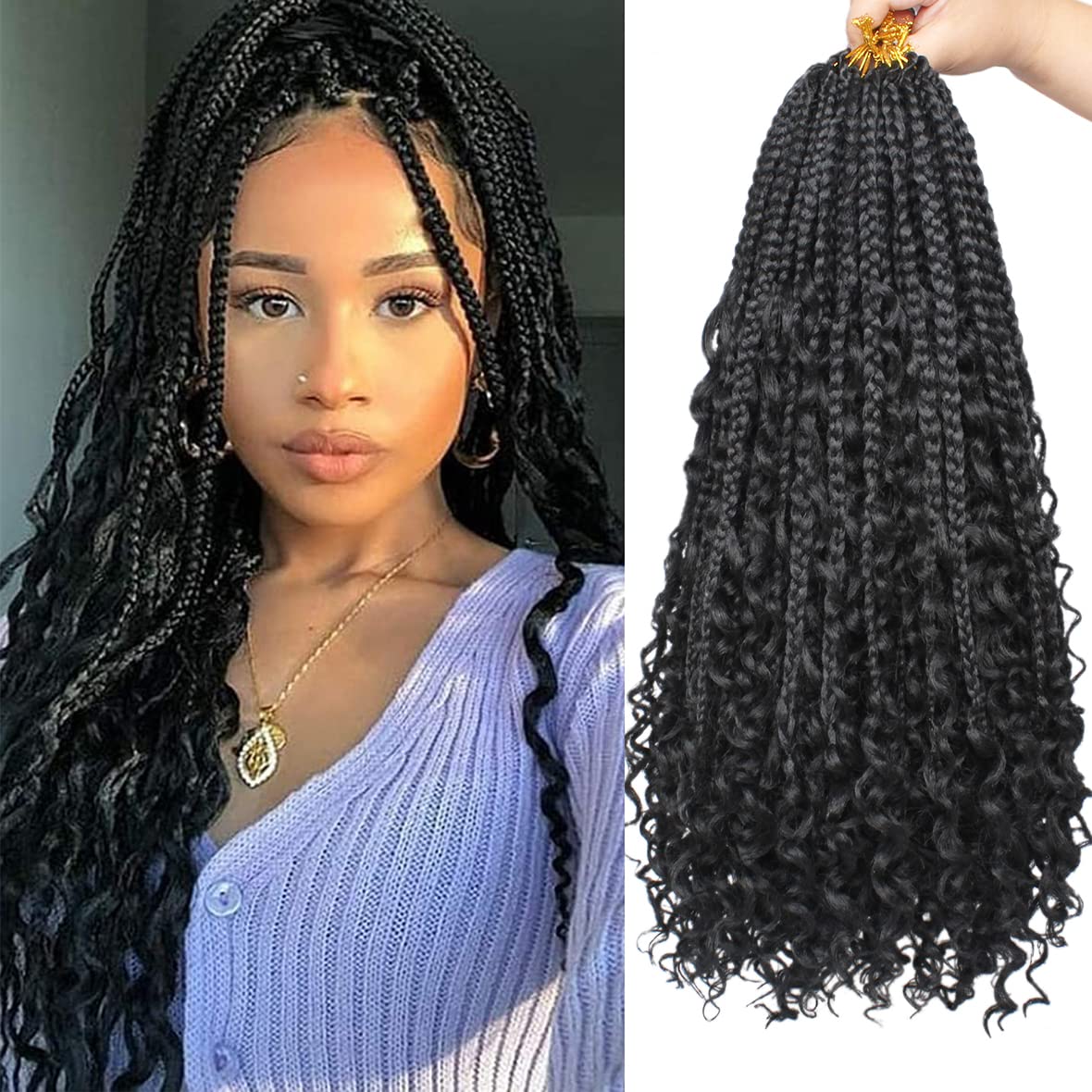
Managing Braids for Long-Term Wear
Proper management of braids ensures their longevity and maintains hair health. How to care for braids?It’s important to know how to care for braids for extended wear without causing damage.
Recognizing the Signs of Overstaying Braids
It is key to know when braids have overstayed their welcome to prevent hair damage. Look out for these red flags:
- Noticeable Growth: If new growth is more than an inch, it might be time to remove the braids.
- Frizz and Loose Braids: An increase in frizz or braids becoming loose indicates they are old.
- Discomfort and Itching: Persistent discomfort or an itchy scalp may signal that braids need to go.
- Build-up at the Base: Visible accumulation of products or natural oils can lead to scalp issues.
Tips to Maintain Braids Without Causing Damage
Follow these tips to keep your braids in top condition while avoiding hair harm:
- Regular Scalp Care: Use light oils or mists to keep the scalp nourished and hydrated.
- Gentle Washing: If you must wash your braids, do so gently and infrequently to reduce frizz.
- Avoid Tension: Don’t pull on your braids too tightly. It can cause breakage and weaken edges.
- Moisturize Your Hair: Spritz braids with a water-based moisturizer to prevent dryness and brittleness.
- Mind the Duration: Generally, keep braids in for no longer than six to eight weeks to prevent damage.
Keeping these points in mind helps in how to care for braids effectively and can save your hair from unnecessary stress and breakage. By recognizing when to remove your braids and using the right maintenance strategies, you ensure that your hairstyle remains both stunning and safe for your natural hair.
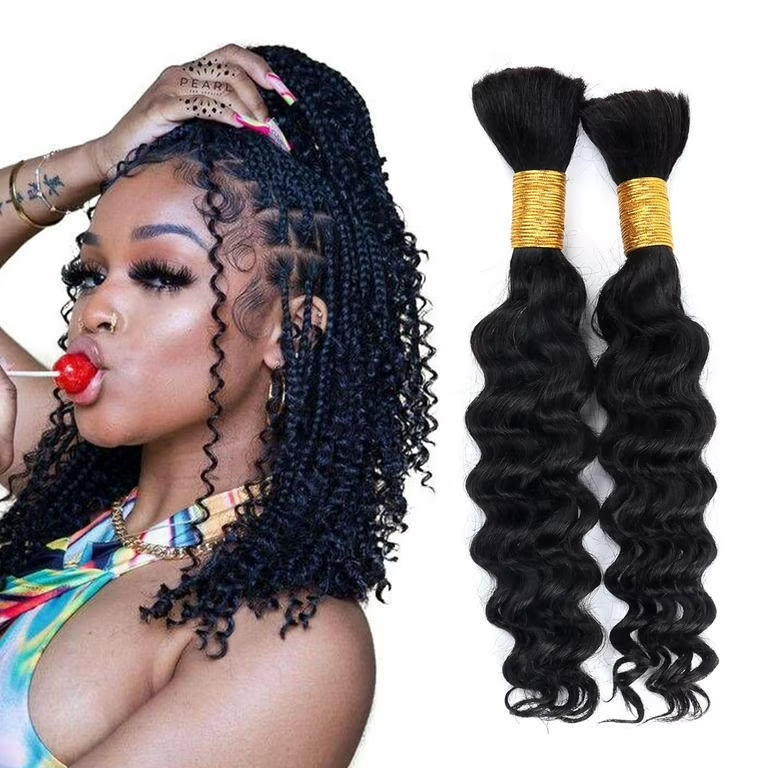
Post-Braid Hair Care
Taking proper care of your hair after braids is essential for maintaining its health. The process involves replenishing lost moisture and repairing any damage. Here are some effective steps to ensure your hair bounces back after the protective style.
Steps to Revive Hair After Braiding
After removing your braids, follow these steps:
- Gently Detangle: Using a wide-tooth comb, carefully detangle your hair starting from the ends and working upwards.
- Wash Your Hair: Shampoo your hair with a gentle cleanser to remove any buildup and then condition it well.
- Deep Condition: Deep condition your hair to restore moisture and elasticity that might have been lost.
- Trim If Needed: If you notice split ends or knots, a slight trim will help prevent further damage.
- Restorative Treatments: Consider a protein treatment to strengthen your hair, but only if needed.
- Moisturize and Seal: Apply a leave-in conditioner followed by a natural oil to seal in the moisture.
These steps are key in how to care for braids after removal. They help avoid breakage and prepare your hair for its next style.
When to Consider a Break Between Braiding Sessions
It’s important to give your hair some time to recover between braiding sessions. Follow these tips:
- Wait for at Least Two Weeks: Give your hair at least a two-week break to regain strength.
- Assess Your Hair’s Health: If your hair feels weak or damaged, extend the break and continue with restorative care.
- Regrowth Observation: Allow your natural hair to grow out a little before reinstalling braids.
Taking breaks between sessions is part of a good hair care routine. It prevents stress on the hair follicles and maintains overall hair integrity. Following a break, your hair will be better equipped to handle the next set of braids.
